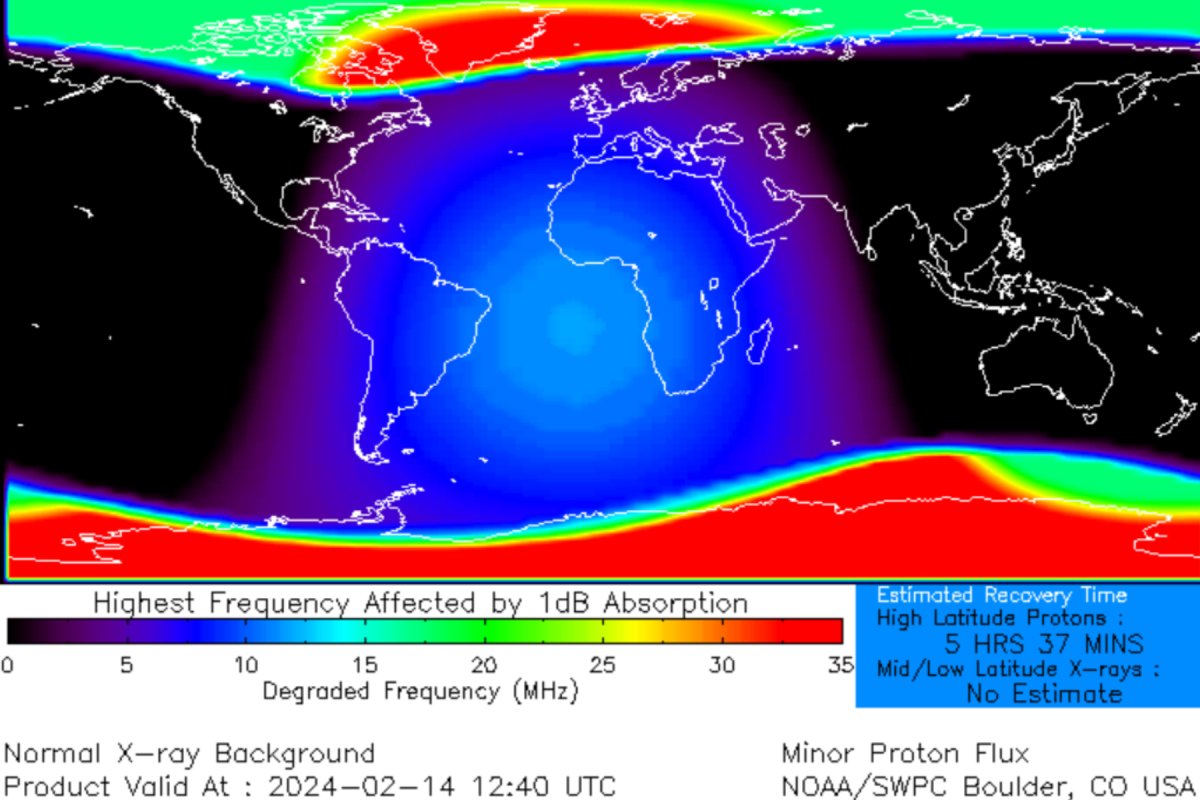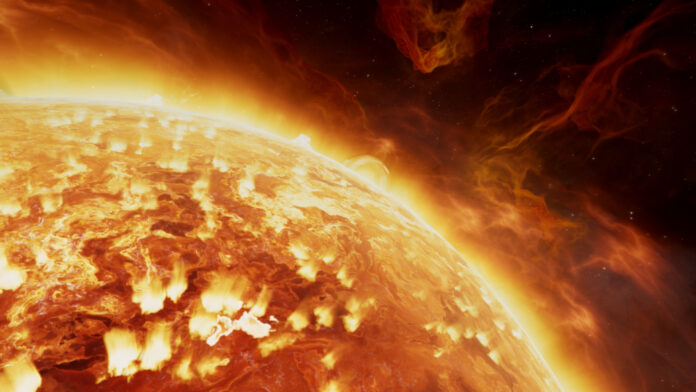A solar storm that has been roiling in the Earth’s atmosphere for three days has led to a polar cap absorption event (PCA), wiping out radio communications near the North and South poles.
The storm was triggered by a solar flare that spat out from the sun’s surface on Monday, which led to radio blackouts across the Arctic Circle. Two days later, the storm is still affecting radio frequencies below 35 megahertz because of the PCA, with those beneath 15 MHz almost completely blacked out.
ISTOCK / GETTY IMAGES PLUS
Solar flares are caused by the rearrangement of tangled magnetic fields on the sun’s surface, leading to a sudden burst of X-rays from our solar system’s star. If this radiation is aimed at the Earth, it can ionize the ionosphere layer of the atmosphere, causing solar storms and radio blackouts. Solar flares are classed on a scale of of A, B, C, M and X, with X being the most powerful and most uncommon.
Radio communications rely on the ionosphere to bounce signals between the sender and the receiver, meaning that if this layer is ionized, it causes radio signals to be absorbed instead, leading to signal degradation.
“Solar flares affect the normal operating conditions for high-frequency radio waves over long distances by affecting their refraction via the upper layers of the ionosphere,” Rami Qahwaji, a visual computing professor and space weather researcher at the U.K.’s University of Bradford, told Newsweek.
“When an M-class or X-class flare occurs, ionization could be produced in the lower and more dense layers of the ionosphere, the D-layer,” he continued. “This ionization can cause radio waves that interact with electrons to lose energy due to the more frequent collisions that occur in the higher-density environment of the D-layer.
“This could lead to HF radio signals to become degraded or completely absorbed, resulting in the absence of HF communication, primarily impacting the 3 to 30 MHz band [for a radio blackout],” Qahwaji said.
The radiation storm was classified as just below an S2 on Monday when it first hit the Earth, but is now a minor S1 class. S2-class solar radiation storms can cause increased radiation risk to passengers and crew in high-flying aircraft, as well as problems with satellites and radio blackouts, while S1-class events usually lead to only mild radio trouble at the poles.
PCAs are a side effect of solar storms and are caused by protons being accelerated by the solar flare along the Earth’s magnetosphere, slamming into the ionosphere at the poles and ionizing the ionosphere. These events can last several days after a solar flare hits the Earth and can cause problems for flights crossing the poles.
The South Pole is most affected by this PCA, as the Earth’s tilt means that the Southern Hemisphere is more tilted into the radiation storm.

NOAA Space Weather Prediction Center / D REGION ABSORPTION PREDICTIONS
The solar storm is subsiding, but the PCA may last for several more days.
Events like this may become more common this year as the sun approaches its solar maximum, which is the period of its 11-year solar cycle where it experiences the most sunspots and therefore the most solar weather. There are usually only 50 S1 storms per solar cycle, and about 25 S2 storms, with S3, S4 and S5 even more rare.
The next solar maximum is due to occur between now and the start of 2026, but we won’t know it’s happened until it’s over.
Do you have a tip on a science story that Newsweek should be covering? Do you have a question about solar flares? Let us know via [email protected].
Uncommon Knowledge
Newsweek is committed to challenging conventional wisdom and finding connections in the search for common ground.
Newsweek is committed to challenging conventional wisdom and finding connections in the search for common ground.


